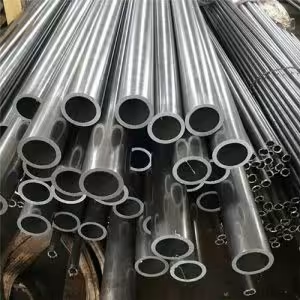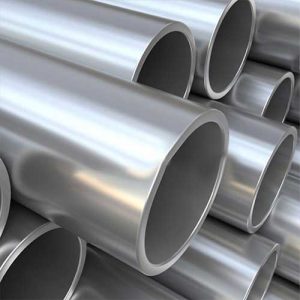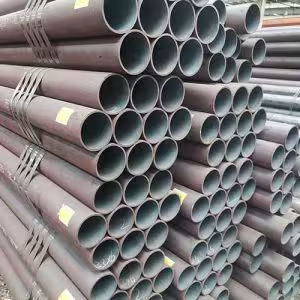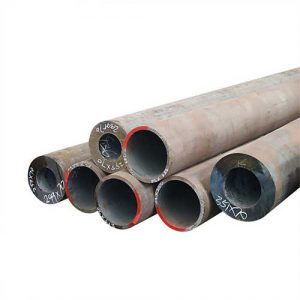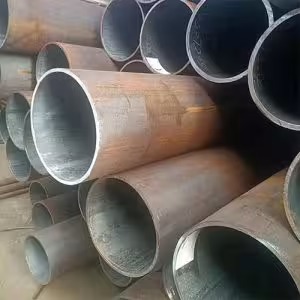مرحبًا بك في مدونتي!
قبل أن نتعمق في المحتوى، أود أن تنضموا إليّ على منصات التواصل الاجتماعي الخاصة بي حيث أشارك المزيد من الأفكار وأتفاعل مع المجتمع وأنشر التحديثات. إليك كيف يمكنك التواصل معي:
فيسبوك : فيسبوكhttps://www.facebook.com/profile.php?id=61565500692293
والآن، لنبدأ رحلتنا معًا. آمل أن تجدوا المحتوى هنا ثاقباً وجذاباً وقيّماً.
جدول المحتويات
مقدمة

Carbon seamless pipe is a vital component in various industries, including oil and gas, construction, power generation, and automotive manufacturing. Unlike welded pipes, carbon seamless pipes are made without a welded joint, giving them superior strength, uniformity, and resistance to pressure.
This guide provides an in-depth overview of carbon seamless pipes, their manufacturing process, advantages, applications, and key specifications. Whether you are in the engineering, procurement, or construction sector, understanding these pipes will help you make informed decisions when selecting the right material for your project.
What Is Carbon Seamless Pipe?
Carbon seamless pipe is a cylindrical steel pipe made from solid billets of carbon steel, which are heated and perforated to create a hollow structure without welding. Because of their high durability, resistance to extreme conditions, and seamless structure, they are widely used in industries that require high-performance piping solutions.
Key Characteristics of Carbon Seamless Pipe
- Seamless Structure: No welded joints, ensuring better strength and reliability.
- High Tensile Strength: Can withstand high pressure and mechanical stress.
- مقاومة التآكل: Suitable for applications where exposure to moisture or chemicals is expected.
- سمك الجدار الموحد: Provides consistent performance in high-pressure environments.
- مقاومة الحرارة والضغط: Can handle extreme temperature and pressure variations.
How Carbon الأنابيب غير الملحومة Are Manufactured
The manufacturing process of carbon seamless pipe involves several critical steps to ensure high precision and durability.
Selection of Raw Material
High-quality carbon steel billets are chosen based on chemical composition and mechanical properties.
التدفئة
The billet is heated to a specific temperature to make it malleable.
الثقب
A mandrel or piercing tool creates a hollow tube from the heated billet.
4. Elongation and Sizing
The pipe is stretched and shaped to achieve the required dimensions and wall thickness.
5. Heat Treatment
The pipe undergoes heat treatment to enhance its mechanical properties and remove internal stresses.
6. Finishing and Inspection
The pipe is cut, straightened, surface-treated, and inspected to meet industry standards.
Applications of Carbon Seamless Pipe

Carbon seamless pipes are used in various industries due to their strength, reliability, and adaptability.
1. صناعة النفط والغاز
- Used in pipeline transportation for crude oil, natural gas, and petroleum products.
- Resistant to extreme temperatures and pressure fluctuations.
2. Construction and Structural Applications
- Utilized in high-rise buildings, bridges, and infrastructure projects.
- Provides structural support in large-scale engineering projects.
3. Power Generation
- Used in power plants for steam boilers, heat exchangers, and pipelines.
- Handles high temperatures and pressure conditions efficiently.
4. Automotive and Mechanical Engineering
- Applied in automotive components, machinery, and hydraulic systems.
- Delivers high tensile strength and durability.
5. Chemical and Petrochemical Industry
- Used for transporting chemicals, fuels, and industrial gases.
- Resistant to corrosion and chemical reactions.
Comparison of Carbon Seamless Pipe with Other Pipes
The following table highlights the differences between carbon seamless pipe and other types of pipes.
| الميزة | أنابيب الكربون غير الملحومة | الأنابيب الملحومة | أنابيب الفولاذ المقاوم للصدأ |
|---|---|---|---|
| عملية التصنيع | No welding, made from solid billet | Welded from steel plates or coils | Welded or seamless |
| القوة | High strength due to seamless structure | Lower strength due to weld seam | High strength with corrosion resistance |
| مقاومة التآكل | معتدل | Lower due to weld defects | High resistance |
| التكلفة | Medium to high | أقل | أعلى |
| التطبيقات الشائعة | Oil & gas, power plants, structural projects | Water distribution, low-pressure applications | Chemical, food, and medical industries |
Key Standards and Specifications for Carbon Seamless Pipe

When selecting carbon seamless pipe, understanding industry standards is essential.
المعايير المشتركة
- ASTM A53: Standard for general-purpose pipes.
- ASTM A106: High-temperature and high-pressure applications.
- API 5L: Oil and gas transportation.
- DIN 1629: Seamless steel pipes for mechanical and structural purposes.
- JIS G3454: Carbon steel pipes for pressure service.
Factors to Consider When Choosing Carbon Seamless Pipe
- القطر وسُمك الجدار: Determine the pipe’s strength and suitability for specific applications.
- تصنيف الضغط: Ensures the pipe can withstand the required operating conditions.
- مقاومة التآكل: Consider protective coatings or materials for environments with high corrosion risks.
- معايير التصنيع: Compliance with ASTM, API, DIN, or JIS ensures reliability.
الخاتمة
Carbon seamless pipe is an essential component in industries requiring durable and high-performance piping solutions. With its seamless construction, excellent mechanical properties, and ability to handle extreme conditions, it is widely used in oil and gas, construction, power generation, and other sectors.
By understanding its manufacturing process, key applications, and industry standards, professionals can make informed decisions when selecting the right carbon seamless pipe for their projects. Investing in high-quality seamless pipes ensures long-term reliability, safety, and efficiency.
الأسئلة الشائعة
What is the main advantage of carbon seamless pipe over welded pipe?
Carbon seamless pipe has no welded joints, making it stronger, more durable, and resistant to pressure and mechanical stress.
What industries use carbon seamless pipe?
It is used in oil and gas, construction, power generation, automotive, and chemical industries for various applications.
How is carbon seamless pipe manufactured?
It is made from solid carbon steel billets that are heated, pierced, stretched, heat-treated, and finished to precise specifications.
What standards govern carbon seamless pipe production?
Standards such as ASTM A53, ASTM A106, API 5L, DIN 1629, and JIS G3454 define quality, dimensions, and performance requirements.
What factors should be considered when choosing carbon seamless pipe?
Consider the diameter, wall thickness, pressure rating, corrosion resistance, and compliance with industry standards.



